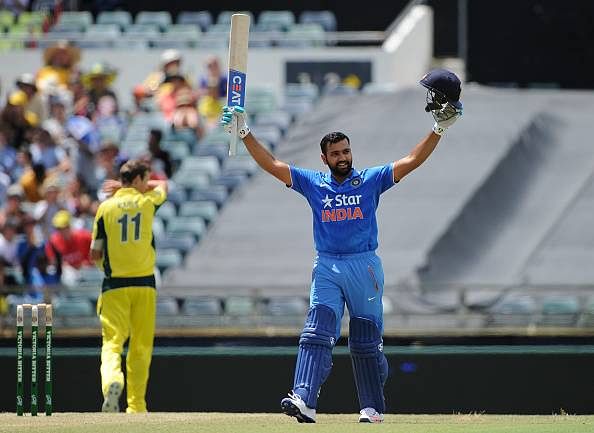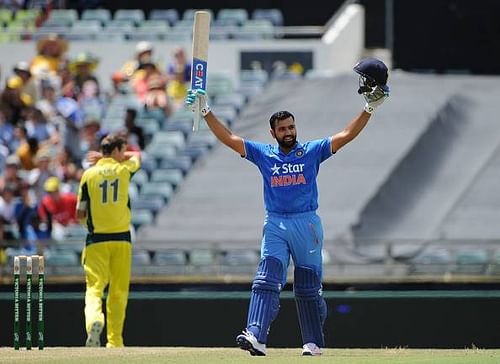
A battle between the Indian batting and the Australian bowling

The Indians have arrived in Australia to provide the fans some serious contest in limited-overs cricket after a summer of lopsided Tests, with New Zealand and West Indies failing to make a fist of it.
The Black Caps may dispute the appraisal, pointing to the goof-up of the third umpire who the ICC felt "followed the correct protocol, but made an incorrect judgment", in the historic day-night Adelaide Test when they were well placed. They are looking forward to the return Tests at home next month to prove that they are not as bad a side as they are made out to be.
India have had some spectacular victories in One-Day Internationals (ODI) in Australia, but these are few and far between and precisely the reason they are well documented and remembered. Of the 43 matches, the Indians won just 10, and winning the best-of-three finals over the world champions 2-0 in 2008 is their best performance.
The talk at home is more about Dhoni saving his job and with it his place in the side after the series. The transition has to take place, but not as speculated. What has to be realised is he alone cannot win with his captaincy or batting, his forces rising to the occasion is as important.
All eyes are on Dhoni's deputy and heir apparent Virat Kohli, batting at a key position. His record down under is marvelous and Rohit Sharma, Shikhar Dhawan and Ajinkya Rahane will have to play around him.
Indian batting vs Australian bowling:
The composition of the squad is such that India will have to go with a pure batsman Manish Pandey at five and not Gurkeerat Mann, though he can double up as an additional spinner. Knowing Dhoni's liking for Ravindra Jadeja, the all-rounder will team up with Ravichandran Ashwin.
Though the experience of Bhuvneshwar Kumar will come in handy, to start with the three faster bowlers, Ishant Sharma, Umesh Yadav and Barinder Sarn should share the new ball.
The Indians need not remember their fifth and the last match against South Africa in Mumbai where the Wankhede Stadium curator came in for some harsh criticism from team India director Ravi Shastri after the visitors smashed 438 with Quinton de Kock, Faf du Plessis and AB de Villiers getting hundreds.
India will do well to fondly remember their seven-match victory spree in the World Cup before losing to the eventual champions Australia in the semi-finals. More important, they bowled out their opponents.
In the championship, the pacemen claimed 72 of the 77 wickets, nearly half of these taken by Yadav (18) and Mohammad Shami (17). The spearhead of that attack Shami got his hamstring stretched after recovering from a serious knee injury and had to be pulled out of this series even before he could bowl a ball in a match.
The usual captain's quote that they won't take the Indians easy by Steve Smith apart, a bilateral five-match ODI series can be exciting as well as boring after the first three games.
The Australians are sticklers when it comes to picking players returning from injury even if the replaced batsman gets a big hundred like in the case of Shaun Marsh, who had to make way for Usman Khawaja when he got fit. He has again been left out of the ODI eleven, with George Bailey getting the nod because he has been with the team for long.
The Australians have also brought in two uncapped fast bowlers, left-arm Joel Paris, who was blooded at WACA and seen as a possible replacement for the retired Mitchell Johnson, and Scott Boland, who had two good years with Victoria. Paris can push the delicate Mitchell Starc, who has perennial fitness problems.
The two newcomers will team up with Josh Hazlewood and the hard working James Faulkner. The four-pronged pace attack and the back-up spinner Glenn Maxwell can give Smith enough fire power, he himself could be turning his arm over.
So, it is going to be a battle between the Indian batting and the Australian bowling.
Veturi Srivatsa is a senior journalist. The views expressed are personal. He can be reached at v.srivatsa@gmail.com